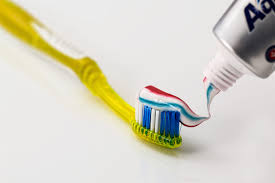
We do not have to lose our teeth as we age. If we properly maintain our teeth, there is a high chance we could keep them for life. Good oral hygiene, having regular professional cleanings, and oral examinations is the start of taking care of your teeth. Periodontal care involves caring for not only about your teeth, but the structures around them. Gum disease, a bacterial infection, threatens the gums and tooth-supporting bone. That is why dental professionals are always on the lookout for early signs that patients may not notice. When signs of trouble become apparent, periodontal therapy may be suggested.
Periodontal therapy can take various forms, but the goal is always to restore diseased tissues to health. Gum (periodontal) disease can spread from the gums to the bone that supports the teeth. In most severe cases of gum disease can lead to tooth loss . There are very effective therapies to combat this. One therapy is scalings (deep cleanings) that remove plaque and calculus (tartar) from beneath the gum line. In severe cases another type of therapy could be surgical repair of lost gum and bone tissue.
Gum Disease Treatment & Procedures
Periodontal therapy includes both surgical and non-surgical techniques. Both techniques help to restore health to the gums and bones that support the teeth and prevent tooth loss. They include:
- Scaling And Root Planing – These deep-cleaning techniques are the best starting point to control gum disease. Plaque and calculus (tartar) are removed from beneath the gum tissues, using hand scalers and / or ultrasonic instruments.
- Gum Grafting – Sometimes it’s necessary to replace areas of lost gum tissue. That way tooth roots are adequately protected. This can be accomplished by taking healthy gum tissue from one area of the mouth and moving it to where it is needed. Laboratory – processed donor gum tissue, can also be used to replace unhealthy gum tissue.
- Periodontal Plastic Surgery – The phrase “plastic surgery” refers to any reshaping procedure that creates a more pleasing appearance of the gum tissues.
- Periodontal Laser Treatment –Removing diseased gum tissue with lasers can offer significant advantages over conventional surgery. You can experience less discomfort and gum shrinkage with a laser.
- Crown Lengthening Surgery – This is a surgical procedure in which tooth structure that is covered by gum and bone tissue may need to be exposed either for cosmetic reasons (too make the teeth look longer and the smile less gummy) or to aid in securing a new dental crown.
- Dental Implants – Today’s preferred method of tooth replacement is a titanium dental implant, which is placed beneath the gum line and into the jawbone during a minor surgical procedure. The implant is then attached to a realistic – looking dental crown that is visible above the gum line and indistinguishable from a natural tooth.

Your Role In Periodontal Health
Dental plaque is the main cause of periodontal disease. It’s essential to remove plaque every day with effective brushing and flossing. Proper techniques can be demonstrated for you if you have any questions.
There are some areas of the mouth that a toothbrush and floss just can’t reach. Which is why it’s so important to have regular professional cleanings at the dental office. Your regular dental exam is also a time when early signs of gum disease can be detected. Dentists look for signs of gum disease before they become apparent even to you.
Eating a nutritious diet low in sugar, and staying away from tobacco in all forms, will increase your periodontal health. Living a health lifestyle improves your chances of keeping your teeth for life.
